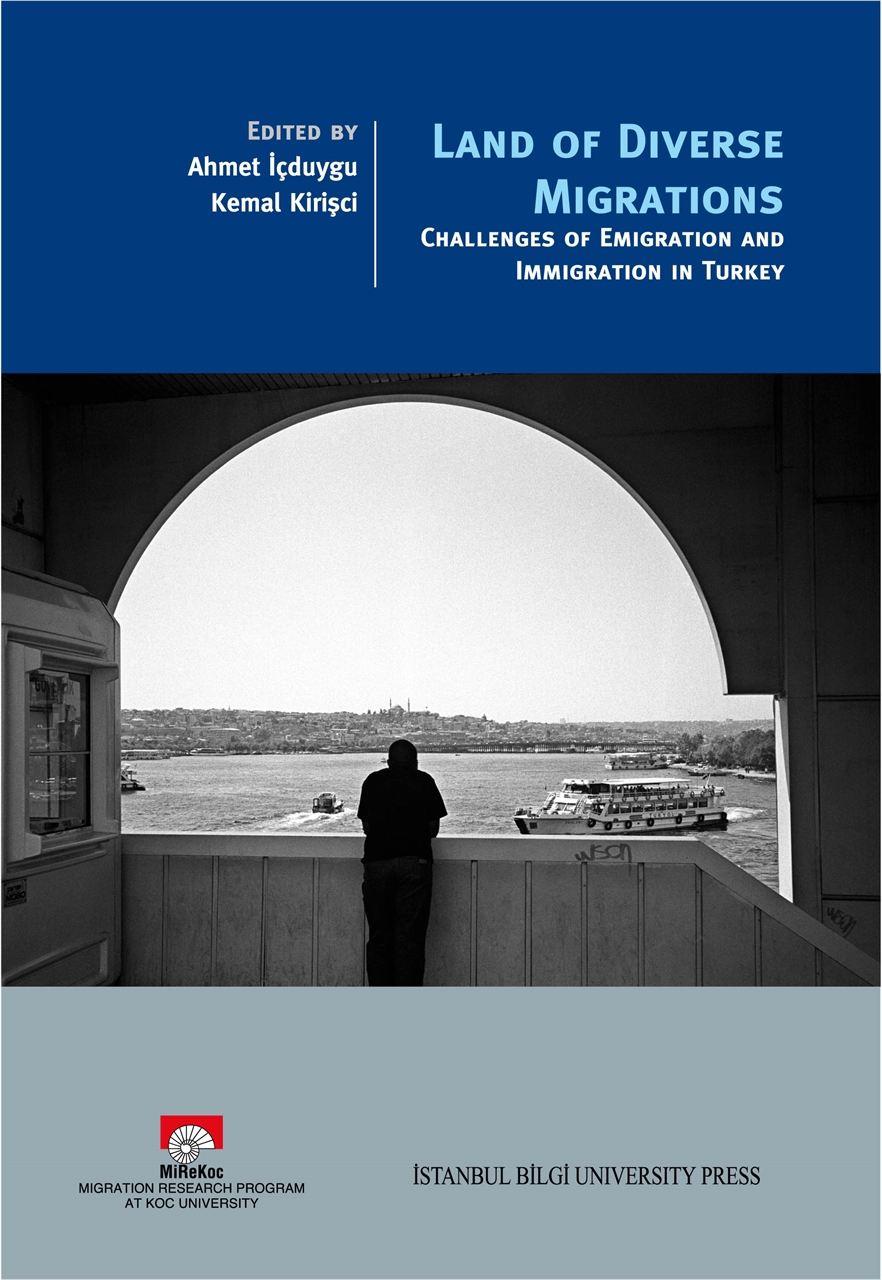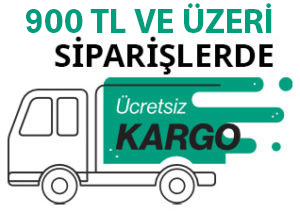
Land of Diverse Migrations: Challenges of Emigration and Immigration In Turkey
Due to the large-scale migration from Turkey to Europe in general, and to Germany in particular, since the 1960s, Turkey has primarily been regarded as a migrant-sending country. This image of Turkey characterizes, however, only one aspect of the reality of Turkish migration. Since the early twentieth century, Turkey has become a land of diverse flows of ever-changing forms of immigration and emigration. This collection of essays gives a thorough picture of both of these aspects and puts them into their historical context.
Introduction: Turkey’s International Migration in Transition
Ahmet İçduygu - Kemal Kirişçi
Emigration in Transition
Immigration in Transition
Asylum in Transition
The Volume
PART ONE Emigration From Turkey
1 Borders of Belonging in the ‘Exchanged’ Generations of Karamanlis
Renk Özdemir
Introduction
Literature Review
Research Design
Hypothesis and Research Question
Methodology
Analytical Part: Results and Discussions
‘Borders of Belonging and Immediate Others’ in the Last of the Imperial Realms
Nationalization of Belonging
Nationalization of Belonging in the Greek Kingdom
Nationalization of Belonging in the Ottoman Realm
Crossing the Borders: The Decision to ‘Exchange’ The Karamanlis
The Resetting of the ‘Borders of Belonging’ Through a Metaphorical Rite of Passage
Borders of Belonging and the Separation Phase
Borders of Belonging and the Margin/ Limen (Transition) Phase
Borders of Belonging and the Reaggregation (Reintegration) Phase
Drawing Conclusions and Policy Implications
2 Turkish Highly Skilled Migration to the United States:New Findings and Policy Recommendations
Şebnem Koser Akçapar
Introduction and Literature Review
What is ‘Brain Drain’?
Early Literature on ‘Brain Drain’
Recent Literature on Brain Drain
Persisting Skepticism on Skilled Migration
New Trends in Skilled Migration
The Emigration of Highly Skilled People from Turkey to the US
Research Question and Methodology
Theoretical Framework
Research Question and Objectives
Data Collection and Respondents
Analysis
Patterns of Turkish Migration on the US
Early Flows from Turkey to the US (1820-1950)
Flows of Professionals (1951-1980)
Immigration of Different Groups: Professionals, More Student Flows, and Semi-skilled/Unskilled Workers (1980-2004)
The Foreign-Born from Turkey and Naturalized Turkish People in the US
From Temporary Migration to Permanent Residency
Turkish Students in the US and the Internationalization of Higher Education
The Role of Turkish-American Organizations in Creating a Transnational Identity
Early Turkish Associations in the United States
Turkish-American Associations Today
Research Results and the Findings
Turkish Graduate Students
Main Problems While Studying Abroad
Future Plans (Temporary or Permanent)
Young Professionals
Que Sera, Sera? Return Intentions of Young Professionals From Turkey to the US
Return Trends
‘Pioneer’ Highly Skilled from Turkey
Identity Re-formation and Transnationalism Among Turkish-Americans
Generational Changes
Returnees
Undergraduate Students in Turkey with Intentions to go Abroad
Conclusions and Policy Recommendations
Appendices
Appendix 2.1: Turkish Associations in the USA
Appendix 2.2: Questionnaire
Appendix 2.3
Appendix 2.4
Appendix 2.5: Abbreviations
3 World City Berlin and the Spectacles of Identity: Public Events, Immigrants and the Politics of Performance
Levent Soysal
Introduction
Literature Review
From Turkey to Europe-A Brief History
Labor, Culture, and Transnationalism
Integration Question
Symbolic Foreigners
Research Design
Questions and Premises
A Note on Methodology
Analysis
Findings and Results
Theory and Practice of Spectacle and Plurality in Europe
Spectacular Events, Events on Spectacle
Classifying the Spectacle
Discussion
Identities of Berlin and Kreuzberg
Calendar of Spectacles in Berlin
Spectacle is No Longer Unique
The Politics of Spectacle
Spectacle is What Makes a City a City
Where Have All the Immigrants Gone?
Conclusion and Policy Implications
Select Bibliography
4 Culture and Migration: A Comparison of Turkish Migrant and Non-Migrant Mother’s Long-term Socialization Goals
Bilge Yağmurlu
Introduction
Parenting Styles, Ideas, Values and Behaviors
Parenting and Child Characteristics
Parenting and Culture
Parenting and Socioeconomic Background
Maternal Education, Parenting and Child Outcomes
Turkish Familial Patterns
The Present Study
Method
Participants
Constitution of two Groups of Mothers in Terms of Their Educational Status
Other Recruitment Criteria
Demographic Characteristic of Participants
Characteristics of Mothers
Characteristics of Parents of Participant Mothers
Characteristics of the Target Child
Characteristics of the Father of the Target Child
Household Composition
Recruitment Procedure
Measures
Sociodemographic Questionnaire
Socialization Goals Interview
Coding Schema for SGI Main Categories
Coding Schema for SGI Subcategories
Translation of Materials
Results
Results for Five Main Categories
Analysis of Subcategories of Self-maximization and Proper Demeanor
Analysis of Subcategories of Self-maximization
Analysis of Subcategories of Proper Demeanor
Differences in Mothers’ Responses With Respect to the Sex of the Child
Within Group Ranking in the Categories
Discussion
General Discussion and Conclusion
Appendices
Appendix 4.1: A Sample Interview With a De-Identified Low-Educated Mother
Appendix 4.2: A Sample Interview With a De-Identified High-Educated Mother
5 Analyzing the Aspects of International Migration in Turkey by Using 2000 Census Results
Yadigar Coşkun - A. Sinan Türkyılmaz
Introduction
Literature Review and Possible Data Sources on International Migration
Data Sources on International Migration Data in Turkey
Studies on International Migration in Turkey
Research Design
Hypothesis / Research Question
Methodology
Results
Migration Rates on Individual Levels
Migration Rates on Household Level
Conclusion
Appendices
Appendix 5.1: Total Population and the Number of Migrants by Provinces and Districts
Appendix 5.2: Provincial Level (NUTS - 3) EmigrationRates (%), 2000 Census Results, Turkey
Appendix 5.3: Five Region Provinces
Appendix 5.4: 14 Region Provinces
Appendix 5.5: NUTS 1 (12 Regions) and NUTS 2 (26 Regions)
Appendix 5.6: Maps
PART TWO Immigration to Turkey
6 “Integration in Limbo”: Iraqi, Afgan, Maghrebi and Iranian Migrants in Istanbul
A. Didem Danış - Cherie Taraghi - Jean-François Pérouse
Introduction
Research Question
Terminology
Design and Methodology
Theoretical Significance
Incorporation of Migrants in Developing Countries
Social Networks
Changing Patterns of Migration Waves to Turkey
‘Muhacirs’: Welcomed Migrants of the Nation-State Formation Era
Non-European Undocumented Migrants in Istanbul
The Socio-Spatial and Economic Setting for Migrants’ Incorporation
Urban Scenery: Istanbul – Home for Migrants
A Vibrant Informal Economy: A Pole of Attraction For All Migrants
Suitcase Trade
Iraqis in Istanbul: Segmented Incorporation
Iraqis: A Large but Invisible Migrant Group
In Between Legal Categories
A Short Chronology of Iraqi Migration
Iraqi Kurds: Changing Patterns in a Long-Standing Migration Wave
Massive Refugee Arrivals Between 1988 and 1991
1990s and Early 2000s: ‘Explosion’ of Iraqi-Kurdish Irregular Migration
Iraqi Kurds in Istanbul: Fructional Incorporation
The Fading Out of Kurdish Emigration from Iraq After 2003
Iraqi Turkmens: Ethnic Brotherhood, Easier Incorporation?
A Mystery: The size of the Iraqi Turkmen Population
From the Loss of Mosul to the Gulf War: Educational Migration of the Turkmen
Post-1991: Mass Departure
The Association and its Identity Cards: Certificate of Turkishness
Ethnic Business in Osmanbey and Laleli
Iraqi Assyro-Chaldeans: Religious Networks and ‘Deliberate Indifference’
A Community En Route: Iraqi Assyro-Chaldeans
Social Networks of the Assyro-Chaldeans
Religious Networks: Church as the Center of Community
Caritas: Social Services for the Assyro-Chaldeans
Priests at the Center of the Religious Network
The Limits of Socio-Economic Incorporation Through Religious Ties
Afghanis in Zeytinburnu: A Cross Between ‘Permanency’ and ‘Transition’
Afghans in Zeytinburnu: A Brief History
Legal Status
Integrating in Istanbul
The Afghan Turkmen
The Afghan Turkmen Social and Solidarity Foundation
Afghan Refugees and Afghans with an ‘Irregular’ Status
Transit Maghrebis in Istanbul: Trajectories, Profiles and Strategies
A Distinct Presence with Varying Chronologies for Each ‘National Group’
Itineraries and Methods of Entry into Turkey
Profiles of ‘Transitors’ and Forms of Transit
The Tourist
The Shuttle Trader and the Merchant
The Candidate for Exile Toward Europe
The Nanny
The Employee and the Worker
The Student and the Apprentice
The Prostitute
The Person in Escape
The Articulation Between the Categories or the Risks of Classification
Strategies Implemented
The Inscription in a Network More or Less Pre-Constructed and Stable
Components of the Network
Invaluable Family
The Boss/Protector
Housing
School, Health and the Question of ‘Relationships With Turks’
Strategies to Exit
The Regular Exist from the Country and Intra-Urban Mobility
The Exit Ways of the Transit
The Reign of Contingency and Subversion of the Codes
Iranians in Istanbul: Changing Migratory Patterns and Modes of Incorporation
More Than a Million Transit Migrants
Since the 1990s: Ethnic and Religious Minorities on Route
In Search of a Better Life
Visa-Free Regulation Between Turkey and Iran
Networks for Survival, Networks for Incorporation
Conclusion
Social Networks Facilitating ‘Segmented Incorporation’
Incorporation into Housing and Labor Sectors
School, Health and Other Social Services
Implications of State Policies for ‘Integration in Limbo’
7 A Survey on African Migrants and Asylum Seekers in Istanbul
Kelly T. Brewer - Deniz Yükseker
Introduction
Literature Review
International Migration in a Globalizing World
Refugee Flows and Asylum Seeking
Transit and Irregular Migration Through Turkey
African International Migration
Research Design
Research Questions
Methodology
Research Methods
Plan of the Report
African Migrants in Istanbul: A Demographic Profile
Framework of Africans’ Presence: Asylum, Illegality and Charity
The Asylum Process
Irregular Migrants
Humanitarian and Social Aid
Social Networks
The Survey
Migration Process
Life in Istanbul: Social Interactions
Life in Istanbul: Problems
A View of African Migrants’ Lives in Istanbul
Social Interactions Among Affricans and Their Living Conditions
Survival Strategies and Income Earning
Discussion
Conclusion
Appendices
Appendix 7.1: Refugee Flows and Internal Displacement in Africa
Appendix 7.2: Political Conditions that Create Refugee Flows in Selected African Countries
8 The New International Migration and Migrant Women in Turkey: The Case of Moldovan Domestic Workers
Selmin Kaşka
Introduction
Literature Review
Feminization of Migration and Globalisation of Domestic Work
Increasing Demand for Domestic Work: “Care Deficit?”
Increasing Supply of Domestic Labor: Feminization of Migration
Research Design
Research Objectives, Research Questions and Hypothesis
Methodology
Analytical Part
Setting the Context: Moldovan Women Domestic Workers in Turkey
Turkey: The Host Country for Irregular Migrants from Moldova
Moldova: The Country of Origin of Irregular Migrants
Fieldwork Findings
Moldovan Domestic Workers in Istanbul
Employers
Private Employment Agencies: Regulating Irregularity?
Travel Agencies
Conclusion
Appendices
Conclusion: Challenges Facing Turkey as a ‘Migration Transition’ Country and a Future Research Agenda
Index
_This collection reveals the diversity of Turkey's migration experiences. It brings together the findings of empirical research projects on topics as diverse as the role of festivals in the formation of Turkish identity in Berlin, and the experiences of African migrants and asylum seekers in Istanbul. The book makes an important original contribution and should help to dispel stereotypes on Turkey as just a source country for migrant workers for Western Europe.
Stephen Castles, Professor of Migration and Refugee Studies at the University of Oxford
